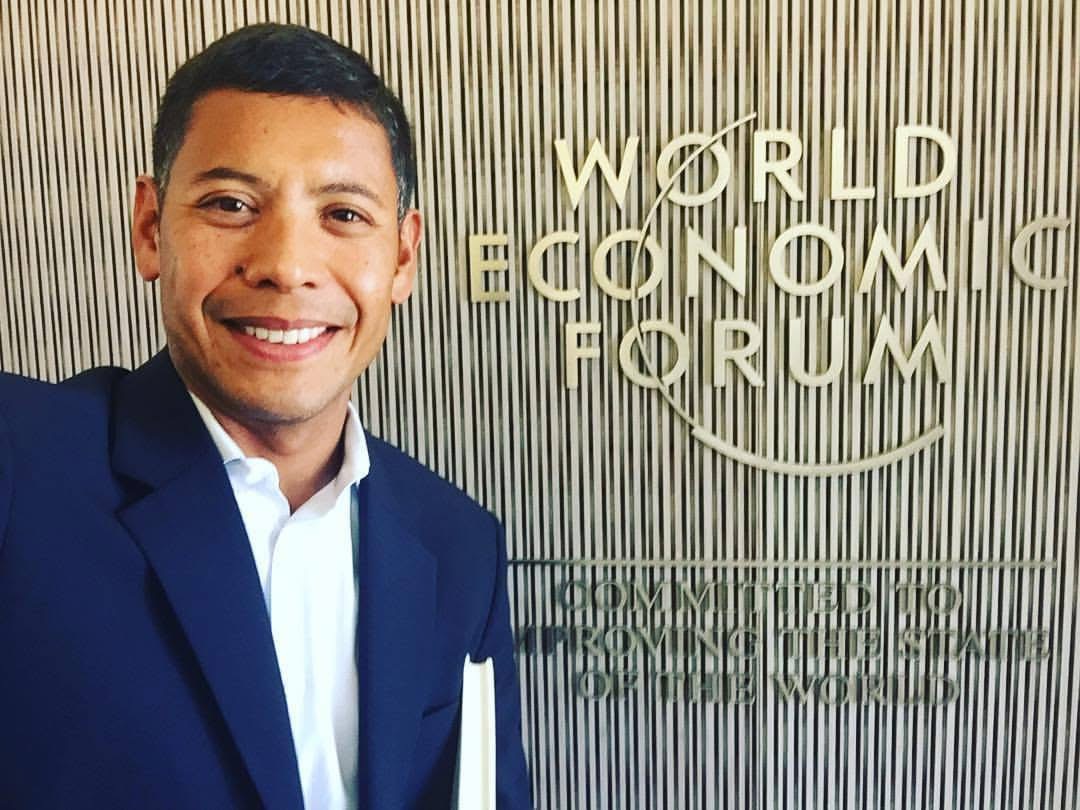With more than two decades of experience at the intersection of business strategy and enterprise technology, Alex Soejarto is widely recognized as a leading voice in the analyst community. A former Gartner VP of Research and IIAR Analyst of the Year, Alex now brings his rare 360-degree perspective — as an enterprise strategist, service provider leader and top-tier influencer analyst — to Bospar as its senior vice president of Analyst Relations.
In this Expert Insights interview, Alex dives into his AR expertise, strategies for how clients can make their AR stronger, and how PR and AR can work together to get the best outcomes.
Talk about your experience at Gartner. What were your key takeaways from that work?
As an analyst, I worked with a lot of organizations through their business life cycle and company news. That included small companies that were growing, big companies that were getting even bigger, companies that were getting acquired, companies that went bankrupt, companies rolling out new products, companies that were changing their strategy, etc. I saw all of the challenges business leaders have throughout the life cycle of their business. And the reasons they have those challenges are their competition, the changes in market, technology, economic and political conditions, and knowing how to navigate those things to make the business work, run and be profitable.
As an analyst, what we’re looking for is how organizations really navigate those challenges, so that they can service their clients effectively. Regardless of whether it’s a services, product or software company, it’s about how to keep consistent products and services going to market throughout all those challenges, and how to keep customers happy and meet their expectations — because it’s about the customer for technology companies.
What does that mean? There are components of a business that work together, like customer experience, product, customer support, etc. So we know the same challenges that you face, your customers face. Not only are you navigating your company through these challenges, you’re helping your clients navigate their companies through these challenges, especially since more and more businesses run on the products that technology companies provide. There’s an added layer of challenge here, too, because it really is about how your clients’ businesses run.
What’s the ideal relationship between PR and analyst relations teams? How should they collaborate to drive impact?
What’s super interesting about having been an analyst and now being part of Bospar is bringing the two pieces together. Some components are the same: As an organization, you need a really good vision for the market. You need to be able to tell that story. And you need to have really good customers to help you tell that story. But when you bring PR and AR together, there’s a whole series of really coordinated efforts that you need to do, like when reaching out to media outlets, journalists and analysts.
The challenge is the two serve different audiences. Analysts help organizations make product buying decisions, navigate through challenges, etc. That’s what’s different about analyst relations; it’s bringing these stories along with positioning products, services or software as the business solutions to problems in the marketplace.
What do most companies get wrong with their analyst relations strategies? How can companies better align their messaging to match how analysts think and write?
Just like in PR where you have to know the background of the journalist and media outlet you’re talking to, you also have to know the coverage of the analyst you’re talking to in AR. You have to know how to contextualize the message, the focus of their publication and even the analyst’s point of view. You also have to ask what business challenges are solved for the end user. That’s a really important component of analyst relations: contextualizing it for the analyst within their point of view, emphasizing the business issue and outcome that the technology solution solves to drive success for clients.
What does a strong analyst relations strategy look like, and why is it critical to a company’s overall communications success?
Good communication in analyst relations is data driven. That data can come through customer case studies, validation in the marketplace with awards or a vendor’s own business measures and historical success. The company has to position the data it has and present it to analysts to rise above the competition for analysts to position the company in the best light. Each analyst sees the market in a different way within the methodology of the market research firm. It’s important to contextualize the data for the analyst’s own point of view.
What are the most effective ways for companies to engage with firms like Gartner when analysts are evaluating the company?
Proof points and data need to align with the vision and execution that a company delivers. These two things are a focus at Gartner: What’s strategy and planned innovation, and how are you executing on those plans? If you look across the analyst industry, each firm has their own approach to vision and execution. Whether you’re talking to Gartner, Forrester or IDC, it’s important to be clear about the company’s vision and support the progress to that vision with the execution proof points and systems to drive success.
Leaders are asking how to distill their message with questions like, “Where do I see the future?” “How do my products and services fit into that future?” “How are we executing on that future vision today?” “How are we organized to tackle the challenges to drive success in that future market?” “How does the future challenge end users and clients?” And, “What are we doing to support the success of our clients?” There are tangible data components to share that tell that story, and it’s why Gartner Peer Insights have become more crucial.
More customers are using Gartner Peer Insights as well as Gartner Magic Quadrants to evaluate technology offerings. The influence of customers and customer references in the way that Gartner, Forrester and others use them has been increasingly important in market positioning.
How do top-tier analyst firms work differently from smaller analyst firms, and what implications does that have for how companies should approach them?
Analysts look at supply of the market and interview all the vendors. They also look at the demand of the market, like what customers are buying today, what they’re going to buy and whether the products they’re buying are working the way they expected. Large tier-one firms have access to both the supply side and demand side to get a really good view of what’s happening across the board in technology markets. Gartner covers numerous technology markets, so it has access to look across the interactions of those markets, while smaller firms focus on subsets of technology or on business issues customers face, such as HR or security specialists. A proper analyst relations strategy is going to pick the influencers that cover their market best, which include firms across tiers one, two and three. This creates a balance to showcase how a company is working with clients and how the company’s products are received in their markets.
Given how high the stakes can be in analyst briefings, what’s your advice for companies on how to best prepare for and deliver a successful meeting?
Prepare for the briefing or RFI to which you are responding. Are you briefing because you’re doing a new product release? Are you briefing because this is part of an acquisition strategy? Are you briefing because you’ve decided to go public or private? Are you submitting information for an RFI evaluation? Are you competing for a customer case study award? Support your position with the supply and demand side components of the initiative.

A supply side view may be that the market is being reshaped, and that’s why you’re going through an acquisition or a public offering. A demand side view can include, “Here’s what our clients say” or “Here’s where our products are going.” A good response brings all that together for an analyst.
How can PR and analyst relations teams work together more effectively to influence or improve analyst perception and coverage?
It’s about knowing how to make sure the storylines are coordinated to support each other. Strategic communication, PR and AR working together requires effective partnership, so that what analysts hear from a vendor is reinforced by what they see out in media coverage and marketing. The news stories of a company that a vendor is broadcasting are reinforced and the analyst can see the complete picture of the story.
When you’re not working, you like to stay active. What made you get into road biking and running, and what do you enjoy about these activities?
I’ve been an avid runner and road biker for a while, and it’s really because of triathlons. I’ve followed the sport as it has grown. I’ve taken on the challenge of every standard triathlon distance from Olympic to full Ironman (140.6). I really enjoy being able to train in three different disciplines (swimming is my weakest link) and learn about so much more, like the mental, fitness and nutrition parts of the sport.




